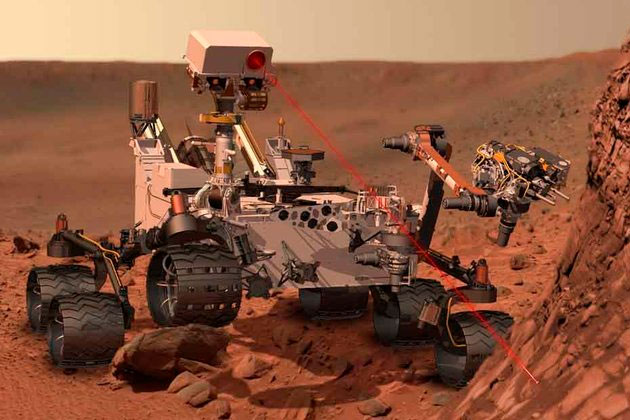The Mars probe is ready to land
NASA's Mars probe robots are in the process of sprinting to land on Mars as planned, in order to fulfill the mission of finding evidence of life on the Red Planet.
The probe called Curiosity is leaning towards Mars after a long journey that began throughout November last year. Under the plan, a car-sized nuclear energy-powered device will end its 567-million-kilometer journey on the morning of August 6.

The landing site is 7km wide, 20km long under the basin of Gale Crater, located near the equator of Mars. This crater - one of the lowest points on Mars - is home to a 5km mountain, and seems to contain many layers of sediment. Scientists guess that this basin was once a lake.
If so, researchers believe that there are many layers of sediments that have been eroded, now only in the central soil.
If Curiosity's journey goes smoothly as planned, 7 minutes after landing, it will stand on the dusty surface of the Red Planet on 6 wheels.
In order to bring a 1-ton robot to land on mound properly, engineers invented a complex system, including a 16-meter-diameter parachute, an aerial platform supporting rockets, and something called The 'sky crane' is designed to lower the robot, helping it slowly land on the ground.
Last week, NASA successfully repositioned the Odyssey spacecraft flying around the earth so it could monitor Curiosity's landing process and transmit information about the ground controller as soon as possible.
- Mars exploration robots will land harassment
- The Mars probe and the fear of failure
- The Phoenix probe is ready to take off on Mars
- What mystery of Mars awaits discovery?
- NASA revealed the mission of the next Mars probe
- India's Mars probe boarded a 100,000 km orbit
- India moved on the launch of the Mars probe
- NASA probe landed Mars to find out the origin of Earth
- India launched a Mars probe
- Is there ice on Mars?
- India will bring the probe to Mars in 2013
- Curiosity is about to drill a third nose on Mars
 Van Allen's belt and evidence that the Apollo 11 mission to the Moon was myth
Van Allen's belt and evidence that the Apollo 11 mission to the Moon was myth The levels of civilization in the universe (Kardashev scale)
The levels of civilization in the universe (Kardashev scale) Today Mars, the sun and the Earth are aligned
Today Mars, the sun and the Earth are aligned The Amazon owner announced a secret plan to build a space base for thousands of people
The Amazon owner announced a secret plan to build a space base for thousands of people